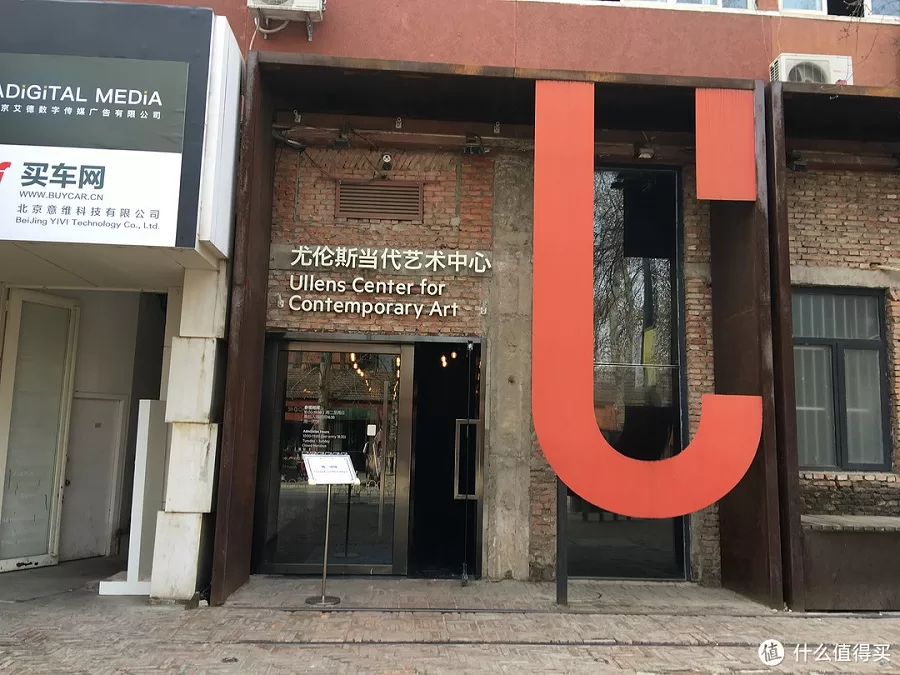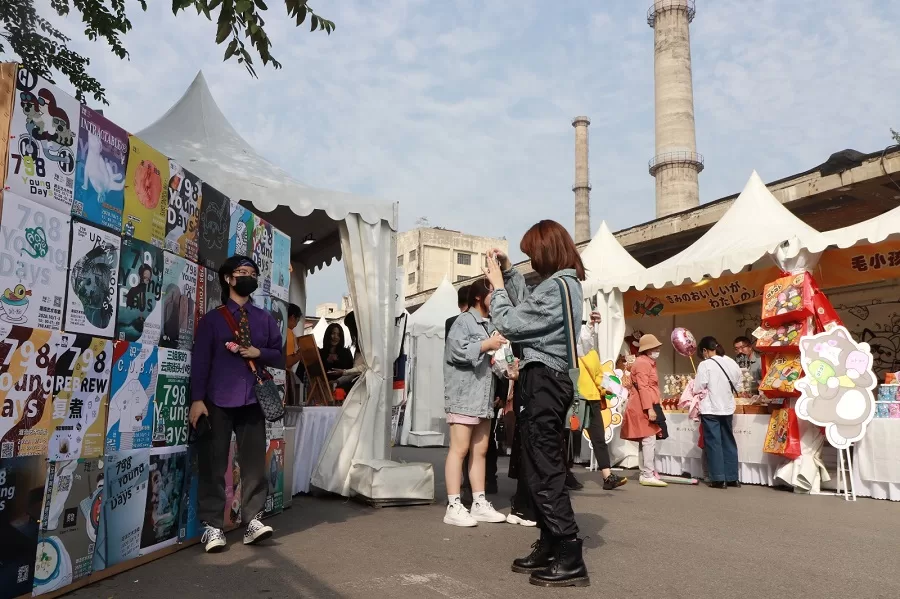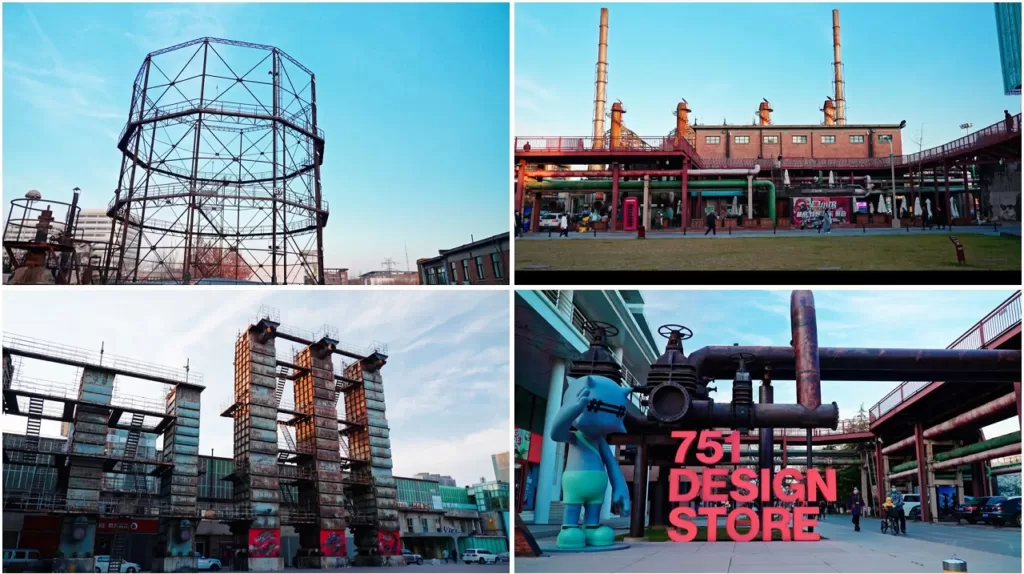The 798 Art District (798艺术区) in Beijing is a vibrant cultural and creative hub. Originally part of a major industrial project built with Soviet aid and East German design, the 718 Joint Factory was established in 1952, covering an area of 1.1 million square meters. In April 1964, it was split into several factories, including Factory 798. Starting in 2002, due to low rents, numerous artist studios and contemporary art institutions began to gather in 798, gradually forming an artistic community.
Visitors to 798 Art District can explore a wide range of art, from traditional Chinese paintings to avant-garde installations and experimental performances. In addition to the galleries, the district is home to a variety of shops, cafes, and restaurants, creating a vibrant and dynamic atmosphere.
798 Art District has become one of Beijing’s most popular cultural destinations, attracting art enthusiasts, tourists, and locals alike. It is a testament to the power of creativity and community, transforming a once-blighted industrial area into a thriving cultural center that showcases the best of contemporary art and design.
Table of Contents
- Basic Information
- Location and Transportation
- History of 798 Art District
- Highlights of 798 Art District
- Vlog about 798 Art District
- Map and Recommended Routes
- Popular Restaurants in 798 Art Zone
- Photography Tips in 798 Art District
- Useful Tips Summarized from Reviews
Basic Information
| Estimated Length of Tour | Over 3 hours |
| Opening Hours | The district is accessible 24 hours a day, but most museums and galleries operate from 10.00 am to 6.30 pm. |
| Ticket Price | The district is free. But museums and galleries often charge an entry fee ranging from 10 to 50 RMB. |
| Telephone Number | 0086-010-59789114 |
Location and Transportation
798 Art District is a contemporary art hub located in the northeastern part of Beijing, China. It is situated in the Chaoyang District, near the Jiuxianqiao Road and the Fourth Ring Road, and covers an area of about 230,000 square meters.
Bus:
- Take bus No. 401, 405, 445, 988, or 991, get off at Dashanzi Lukounan Stop, and the 798 Art District will be to your east.
- Take bus No. 403, 418, 593, 851, or 854, get off at Dashanzi Lukoudong Stop, and the 798 Art District will be to you south.
Subway:
- The nearest subway station to 798 Art District is Wangjingnan (望京南), but after you exit from the station, you still need to walk about 1.6 kilometers (1 mile) to the east to reach the area.
Self-drive:
- There are several parking lots in 798 Art District, so it will be pretty convenient if you drive yourself.
History of 798 Art District
The history of 798 Art District dates back to the 1950s, when the Chinese government collaborated with the East German government to construct a complex of factories in the Dashanzi area of Beijing. The factories were designed to aid China’s industrialization, and the complex was known as the 718th Factory.
After the factory’s closure in the 1990s, many artists and cultural organizations began to move into the abandoned buildings. The area became a hub for contemporary art, with artists converting the factories into studios, galleries, and exhibition spaces.
The name “798” comes from the factory’s original designation as the Joint Factory 798. The designation was later changed to the Beijing Seven-Star Electronics Company, but the area retained the name “798” as a nod to its industrial past.
In 2001, the 798 Art District hosted the first Beijing International Art Biennale, which attracted artists and visitors from around the world. This event helped to establish the district’s reputation as a premier destination for contemporary art in China.
As the district grew in popularity, the government began to take notice. In 2004, the government began to regulate the district’s activities, leading to the closure of some galleries and studios. However, many of the district’s cultural organizations and businesses worked to negotiate with the government to preserve the area’s artistic character.
Highlights of 798 Art District
Art Galleries

The 798 Art District is home to a variety of art galleries showcasing contemporary art from both local and international artists. Some of the most well-known galleries in the district include the Pace Gallery, White Space Beijing, and Long March Space. These galleries exhibit a diverse range of art, from paintings and sculptures to installations and multimedia works, and feature both emerging and established artists. Many of the galleries have their own unique style and focus, providing visitors with a wide range of artistic experiences.
Public Art Installations

The 798 Art District is famous for its large-scale public art installations, both inside and outside of the galleries. These installations are often interactive, thought-provoking, and visually stunning. Some notable installations include the towering red sculpture “Angel” by Zhang Xiaogang, the “Crystal Palace” installation by Huang Rui, and the “Lunar Reflections” light installation by Wang Yuyang. These public art installations are an integral part of the district’s artistic and cultural character, providing visitors with an immersive experience of contemporary art in a public setting.
Museums

The 798 Art District is home to several museums that showcase contemporary art from both local and international artists. The Ullens Center for Contemporary Art is one of the most well-known museums in the district, featuring exhibitions from some of the world’s most renowned contemporary artists. Other notable museums include the Beijing Inside-Out Art Museum, which showcases emerging Chinese artists, and the 798 Photo Gallery, which features a diverse range of photography exhibitions.
Design Shops

The 798 Art District houses a variety of design shops that showcase fashion, home decor, and other unique designs. Visitors can browse and purchase a range of items, from clothing and jewelry to furniture and home goods. Some notable design shops in the district include the China Design Museum, which features innovative designs from both Chinese and international designers, and the Red Gate Gallery Shop, which sells a variety of unique and handcrafted items.
Street Performances

The 798 Art District is known for its lively street performances, including live music, dance performances, and theatrical shows. These performances can be found throughout the district and provide visitors with a unique and immersive cultural experience. The district’s outdoor spaces and public areas provide the perfect backdrop for these performances, and visitors can often catch impromptu shows while exploring the area. Some notable performance venues in the district include the 798 Art Factory and the 798 Square. Whether it’s a local musician strumming a guitar or a troupe of dancers putting on a show, the street performances in the 798 Art District add to the vibrant and creative atmosphere of the area.
Cultural Festivals

The 798 Art District hosts several cultural festivals throughout the year, providing visitors with a chance to experience the district’s creativity and cultural vibrancy. The Beijing Design Week is one of the most popular festivals in the district, featuring exhibitions, talks, and workshops showcasing innovative design from both Chinese and international designers. The Beijing International Art Biennale is another popular festival, featuring exhibitions from some of the world’s most renowned contemporary artists. Other notable festivals in the district include the Beijing Independent Film Festival and the 798 Photo Festival.
Vlog about 798 Art District
Map and Recommended Routes

Start your day early, and head to the district around 10 AM to beat the crowds.
Begin your tour at the UCCA Center for Contemporary Art, one of the most popular art institutions in the district. Here, you’ll find a range of contemporary art exhibitions and installations, as well as a bookstore and cafe.
Next, explore the galleries and art spaces located in the district. Some popular ones to check out include the Long March Space, Faurschou Foundation, and Pace Gallery.
Take a break from the art and grab some lunch at one of the many cafes and restaurants in the district. The Baochao Hutong area nearby has some great options for local cuisine.
After lunch, continue your art tour and visit more galleries, shops, and studios. You can also visit the 798 Art Zone Artistic Creative Market to browse and purchase locally-made crafts, art, and souvenirs.
If you’re interested in architecture, make sure to admire the unique Bauhaus-style buildings that house the galleries and studios in the district.
Wrap up your day with a drink or dinner at one of the district’s many bars and restaurants. The Vineyard Cafe and Bar is a popular choice with great views of the district.
Popular Restaurants in 798 Art Zone
Wan Xiaoguan (万小馆)
📍 Address: 1-7 Zhong Er Street, 798 Art Zone
Wan Xiaoguan is a go-to spot for bullfrog dishes, especially popular among locals. Their dry pot bullfrog is a must-try, featuring a large portion of crispy, flavorful bullfrog meat paired with handmade ice jelly, creating a perfect balance of taste and satisfaction.
Menglin Kitchen (孟林厨房)
📍 Address: Taoci Er Street South, 798 Art Zone
Menglin Kitchen welcomes you with a cozy atmosphere and plenty of greenery. Known for its light yet flavorful dishes, the restaurant’s signature Qingyuan Chicken is a must-try for its perfect blend of lightness and flavor. Another highlight is the crispy, non-greasy fried mushrooms.
Mountain Sparrow Wagyu Restaurant (山雀和牛餐厅)
📍 Address: Shiwankongjian, Xijie 02, 798 Art Zone
A charming and upscale restaurant, Mountain Sparrow Wagyu offers a delectable Wagyu pasta that stands out for its rich and savory taste. However, be prepared for a slower service during peak hours.
Shen Ji Restaurant (沈记菜馆)
📍 Address: Beikou, Zhong Yi Lu, 798 Art Zone
Hidden in one of the 798 alleys, Shen Ji Restaurant is a private eatery frequented by regulars who come back for the homely flavors. A standout dish is the stuffed gluten, a small portion priced at ¥68, which is exceptionally flavorful when drenched in sauce.
Si Xi (肆喜)
📍 Address: Next to Lao Beijing Zhajiangmian, Taoci Yi Street, 798 Art Zone
Si Xi is a warm little shop offering a variety of comforting dishes, including the beloved snail rice noodles and beef noodles. Their selection of sweet soups also provides a sense of homey comfort.
Suzuki Shokudo (铃木食堂)
📍 Address: 798 Creative Plaza, Jiuxianqiao North Road
Styled like a restaurant straight out of a Japanese anime, Suzuki Shokudo has been a favorite among trendy diners for years. Must-try dishes include their tofu rice, meatloaf, and roasted vegetables.
Yunshui Girl (云水姑娘)
📍 Address: 1 Qixing West Street, 798 Art Center, Jiuxianqiao Road
For a taste of Yunnan cuisine, Yunshui Girl is a delightful change of pace. Their oversized rice noodles are packed with flavorful ingredients, and the soup is particularly delicious. The freshly baked flower cakes are served warm and soft, and their beef jerky is both spicy and generous in portion.
Love Moments·BOTANICA Botanical Garden Restaurant (珍爱时刻·BOTANICA植物园餐厅)
📍 Address: A11, 751 Fashion Design Plaza, 798 Art Zone
BOTANICA offers a stunning environment resembling a botanical garden, making it an ideal spot for afternoon tea with friends or a romantic date. The ambiance is beautiful, and the menu is perfect for a leisurely afternoon.
Dongba Time Zone (东八时区)
📍 Address: No. 4 Street, 798 Art Zone
Dongba Time Zone offers a diverse menu with both Western and Japanese cuisine. The variety of dishes makes it a great spot for groups with different tastes, ensuring everyone finds something they like.
At Coffee
📍 Address: Qixing East Street, 798 Art Zone
At Coffee is more than just a coffee shop; it offers a range of dishes, including steaks and pizzas. The outdoor seating area is particularly enjoyable during the spring and fall, making it a perfect place to relax and dine.
Photography Tips in 798 Art District
Floral Decorations: The various flowers in front of the small shops, whether in broad daylight or under evening lights, provide beautiful and vibrant backgrounds for your photos.
Graffiti Art: The art zone is filled with graffiti of all sizes and styles. These can be found all around the area. Find the ones that resonate with your style for some striking and unique shots.
Old Machinery: The remnants of old machinery from the 1950s, juxtaposed with modern art, create a layered and textured backdrop, adding depth to your photographs.
Evening Streets: The quiet and charming streets at dusk, illuminated by streetlights, offer a tranquil and cozy atmosphere. Photos taken during this time will have a serene and comfortable vibe.
Useful Tips Summarized from Reviews
Luggage Storage: If you’re carrying bags or luggage, there’s a luggage storage service available. The fee is 20 yuan per piece per day for luggage and 10 yuan per piece per day for backpacks. The storage location is approximately 190 meters inside the southwest gate of Beijing 798 Art Center.
Plan Your Time: 798 Art District is quite large, but you can explore it in a few hours if you’re not planning to spend a lot of time at each gallery or exhibition. A half-day should be sufficient to get a good overview of the area.
Admission: While entry to Beijing 798 Art District itself is free, visiting galleries and exhibitions may require purchasing tickets. Ticket prices typically range from 20 yuan to 100 yuan or more, depending on the specific exhibition. Keep in mind that some exhibitions may be closed on Mondays.
Wear comfortable shoes: The district is mostly pedestrian-friendly, and you’ll be doing a lot of walking. Wear comfortable shoes to make the most of your visit.

